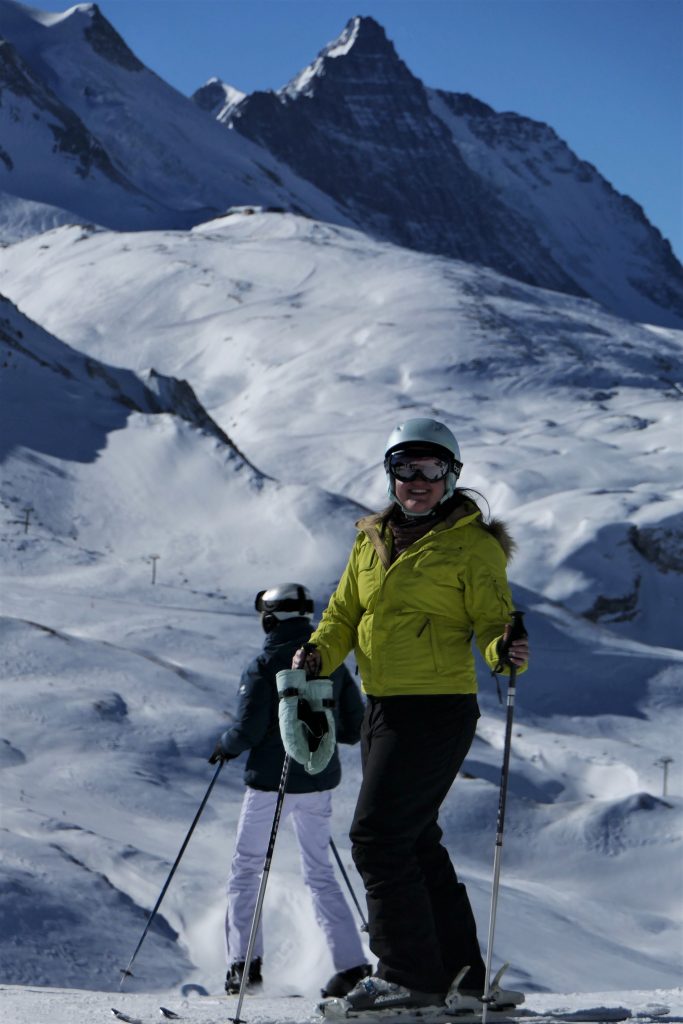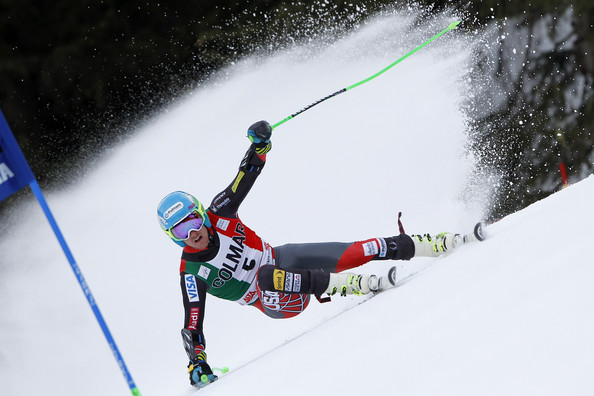
Traversing
We began today by going straight up to the top of the beginner’s button lift then traversing across the steep slope. Traversing , side stepping and side slipping are all ways to negotiate a slope through losing altitude without turning.
You stand vertical and this places both skis on their uphill edges. Just point the skis a little downhill and you slide forward – but the skis will carve an arc back up the hill bringing you to a stop unless you adjust their direction deliberately.
Hannah was fine with this until we eventually went on an even steeper slope where anxiety kicked in. This resulted in the inevitable “bottom turned to face downhill and upper body rotated uphill” emotional response – looking for security. Like with all unwanted emotions it’s the exact opposite that works – which eventually led us onto “angulation”.
Side Slipping
Side slipping is an extremely important skill – so any time spent doing this for a beginner is invaluable. Most people don’t want to do it because they feel it’s just a boring exercise but they miss the fact that it’s probably the most important aspect of a ski’s function.
The skis must be held close together so that they both remain on their uphill edges. If the top ski drifts apart and is left uphill it will flip onto its downhill edge. We control the start and stop of the side slip with the centre of mass – placing it uphill to stop and moving it a tiny amount downhill for a controlled slip on two skis.
However – if the bottom is turned to face downhill then it won’t work – so angulation needs to be applied.
The centre of mass can be used as a joystick control – moving it downhill and forwards creates a forward diagonal side slip – moving it downhill and backward gives a backward diagonal side slip.
Angulation
Here we go – skiing suddenly getting technical…

The “hip angulation” is seen on his left hip joint.
The key to functional and protective hip angulation is that the pelvis must face the outside of the turn (from start to finish) but not the chest and shoulders – which must follow the skis fairly closely.
If the shoulders are turned to face “downhill” (end of turn) then the lower back can be badly damaged with the build up of forces. If only the pelvis faces “downhill” there is a slight counter rotation of the lumbar spine below the rib cage (created simply by pulling that hip backwards – but not the shoulder). When done correctly there is a reflex contraction of the lower abdomen and core muscles when pressure builds under the feet and this protects the spine. Hannah was able to feel this reflex clearly with our stationary exercise – which demonstrated both right and wrong ways.
This needs to be practised in traversing, side slipping and then even in braking plough assisted turns and eventually in parallel turns. We will work more on the necessary details of this.
Foot Forward
Pushing the foot forward through an arc tightens the turn and compliments pulling the hip backwards for angulation (same leg is used). We attempted this to see if it would help Hannah’s confidence building after practising an exercise for it with the skis off.


